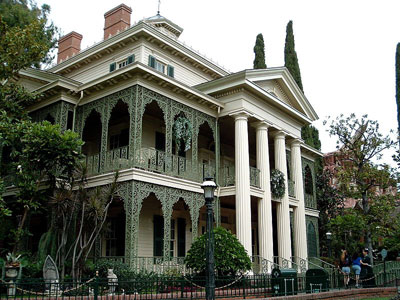The city of New Orleans belongs to the trees. In the rollicking residential neighborhoods of gaslamps and pillars, porches and endlessly long thin houses, the trees grow big as the houses themselves, mighty roots the size of trees in other lands pushing and pulling at the sidewalk, casting aside concrete slabs like so much paper in the wind. In other cities, men with backhoes would come and hack at the living wood, tamp it down, corral it, make it bend to human will so the sidewalk could lie flat and even and safe for wheels and half-drunk tourists. Not so here. Here the humans put up cautionary hands, accept their place in the hierarchy, allow the trees to sprawl as God intended, make adjustments, trip over cracks in the pavement and dip their tires down low to accommodate.
The only battle of significance ever fought here was after the war in which it played a role had officially ended. The city is the largest in the world to sit below sea level, a fact painfully raised by the 2005 hurricane that conspired with human neglect to nearly destroy the place. The largest celebration of the year honors the last day of bliss before forty days of restraint and self-reflection, one final bacchanalian death throe before the calm of the days that follow.
In most civilized parts of the world, the humans there try to control the land they’re on, to shape it and alter it so it conforms to their vision of existence. Here there is a sense of acquiescence, of acknowledgment of forces beyond control, be they trees that shape the roadways or ghosts that shape the past. The lights flicker and dance, the revelers do the same, the low-lying lands give off the feeling that one is already underwater, drowning, going down fast, and it’s time to let go. The symbol of the city is a long-dead flower of a long-dead monarchy in a country whose influence over the city ended, directly, two centuries ago. There is a palpable feeling sometimes, in the heat and humidity of an August afternoon, that we might all be dead already, that we are living out the memories of our lives as they once were, some sort of haunted mansion planet that people can only come to visit and see through crystal balls or lettered boards or Geiger-style counters in the basement frost.
Of course there are people doing the hard work of restoration. One sees it everywhere, taking buildings that may not have been working or at least glorious since The Storm and mulching the front lawn, repainting the pillars, replacing the windows. There are workers everywhere in this part of the city where we’ve settled, sweating through their shirts and pointing to various detail work for the wealthy families come to reclaim their patch of heaven. So it is everywhere in a nation such as ours, even in the fabled lands below the waterline. Here I feel none of the defiance of New Jersey, though, or even Boston. It’s more of a humble effort in the face of the inevitable. “How do we ever survive this life?” I asked myself in a fit of despair the other day. Then I started giggling, almost uncontrollably.
The joke is that we don’t.



